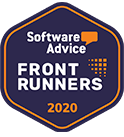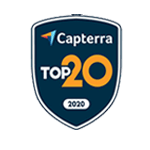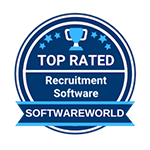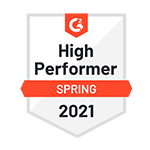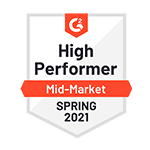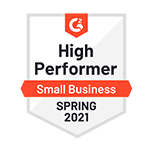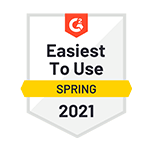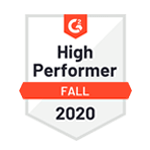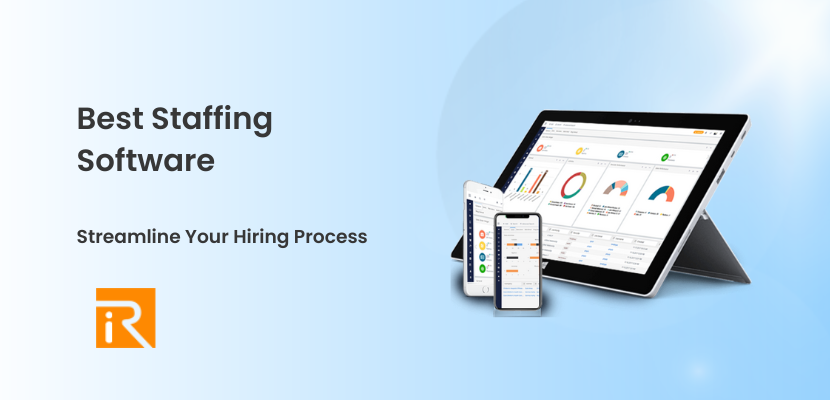
The success of any business largely depends on the quality of its workforce. However, finding, hiring, and onboarding new employees can be difficult for small businesses and staffing agencies that lack sufficient resources. Fortunately, staffing software is designed to automate and streamline the hiring process, making it much easier to source candidates and onboard new hires. With staffing software, businesses can save time and money while improving the efficiency of their hiring process.
In this article, we’ll take a closer look at onboarding software, one of the most critical components of staffing software. We’ll explain how it works and showcase companies that use it. Additionally, we’ll explore the key features that make it essential for businesses aiming to thrive in the current competitive job market. We’ll also examine why RecruitBPM is the best option for companies looking to improve their hiring processes.
Onboarding software
Onboarding software, which is designed to simplify the process of integrating new employees, utilizes electronic forms, automated workflows, and digital signatures. So, this streamlines the onboarding process and makes it easier for businesses to transition new employees into their organization.
How does it work?
Onboarding software works by automating many of the manual processes associated with onboarding new employees. For example, instead of filling out paper forms, new hires can complete electronic forms that are stored securely in the cloud. Consequently, this eliminates the need for physical storage space and reduces the risk of lost or damaged paperwork.
Onboarding software can automate tasks in the onboarding process, such as setting up accounts and scheduling training. As a result, this frees up HR staff to focus on sourcing candidates and improving hiring.
Digitizing Paperwork
The onboarding software digitizes paperwork, eliminating the need for manual forms. New hires can complete electronic forms securely in the cloud, which reduces the risk of losing or damaging paperwork.
Automated Processes
The software automates many of the tasks involved in the onboarding process. These tasks can include setting up new employee accounts, scheduling training sessions, and sending reminders to new hires and managers.
Customized Onboarding Plan
Onboarding software can create a customized onboarding plan for each new employee. Additionally, the plan includes necessary tasks and role-specific training to provide the right information and training at the right time.
Tracking Progress
The software tracks onboarding progress to ensure timely completion according to company policy. To ensure that new employees are fully onboarded and ready to work, HR staff need to keep on top of the process.
Personalized Experience
Onboarding software can provide new hires with a personalized onboarding experience. The software can create a welcome message and introduce new hires to their team members, making them feel more connected and engaged from day one.
Companies that use onboarding software
Many companies across various industries use onboarding software to streamline their hiring processes. For example:
Lyft
Lyft is a ride-sharing company that relies heavily on its driver network to provide transportation services to customers. As such, it’s essential for Lyft to have a streamlined process for bringing on new drivers. Lyft uses onboarding software to manage this process efficiently. The software helps to automate tasks like background checks, which can be time-consuming if done manually. Additionally, the software ensures that new drivers are compliant with local regulations, such as having the proper licenses and insurance. After completing the onboarding process, the driver can access the Lyft app and begin accepting ride requests.
Adobe
Adobe is a software company that produces popular products like Photoshop, Illustrator, and Acrobat. When new employees join Adobe, the company provides them with access to onboarding software, which helps them quickly get up to speed. The software includes an online orientation program that introduces new hires to the company’s culture, policies, and procedures. The orientation program may also include videos or interactive activities that help employees understand their role within the company. Additionally, by using onboarding software, Adobe can ensure that new employees are set up for success and can start contributing to the company’s mission as quickly as possible.
Hilton
Hilton is a global hospitality company that operates hotels and resorts around the world. Hilton provides new employees with onboarding software to help them feel welcome and engaged. The software has a welcome message from the hiring manager. There is a virtual tour of the workplace and resources to help new hires. The hotel provides information on its history, amenities, and departments. This helps new employees get acclimated to their new role. By using onboarding software, Hilton can ensure that new employees feel supported and can quickly become part of the team.
In addition to these companies, many others use onboarding software to help streamline their hiring processes. For example:
- Microsoft: Microsoft uses onboarding software to help new employees get up to speed quickly. The software includes a personalized dashboard that provides information on the employee’s role, team, and projects. Additionally, the software includes resources to help new employees navigate the company’s culture and policies.
- Walmart: Walmart uses onboarding software to help new hires understand the company’s values and mission. Additionally, the software includes interactive modules that cover topics like customer service, safety, and diversity and inclusion.
- Airbnb: Airbnb uses onboarding software to help new employees feel welcome and connected to the company’s mission. Additionally, the software includes a personalized welcome message from the CEO, information on the company’s history and values, and resources to help employees get acclimated to their new role.
Overall, onboarding software is a valuable tool for companies looking to streamline their hiring processes and ensure that new employees feel supported and engaged from day one.
Features in onboarding software
Onboarding software can vary in terms of the features it offers, but some common ones include:
Electronic Forms
Electronic forms are crucial for onboarding software. They let new employees complete paperwork digitally, without physical documents. The forms can cover personal details, tax information, emergency contacts, direct deposit information, and more. Using electronic forms can speed up the onboarding process, reduce errors, and save time for new employees and HR staff.
Automated Workflows
Onboarding software automates many manual tasks in the onboarding process. These include creating accounts, setting up email addresses, and scheduling training. Automated workflows ensure new hires receive necessary information and resources on time, reducing delays and mistakes. Automated reminders are sent to new hires and managers to keep everyone on track.
Customization
Onboarding software should be customizable to meet the specific needs of each business. This can include adding company-specific policies, procedures, and branding to the onboarding process. Customization can help to ensure that new hires receive relevant information and resources, and it can also help to reinforce a sense of company culture and identity. Additionally, customizable onboarding software can help to make the process more engaging and interactive for new hires.
Reporting and Analytics
Onboarding software should provide businesses with the ability to track and analyze key metrics related to the onboarding process. This can include data such as time to productivity, new hire retention rates, and satisfaction surveys. Businesses can identify areas for improvement in the onboarding process and assess the effectiveness of their current strategies by actively tracking these metrics. Reporting and analytics can help to ensure that businesses are making data-driven decisions about their onboarding process.
Task Management
The onboarding software may also comprise of task management characteristics, which enable HR personnel to assign tasks to new hires and monitor their progress. Task management can guarantee that the new hires complete all essential tasks on schedule and in the correct sequence, minimizing the risk of errors or delays. Moreover, task management can assist in keeping the new hires engaged and motivated during the onboarding process by offering them clear objectives and expectations.
Integration
Integrating onboarding software with other HR software systems, like ATS and HRIS, streamlines the onboarding process by sharing data and reducing errors and duplicate entries. It also helps new hires to seamlessly integrate into the broader HR system.
Mobile Support
Onboarding software can also provide mobile support, allowing new hires to complete tasks and access information from their smartphones or other mobile devices. This can be particularly useful for remote workers or employees who are frequently on the move. Mobile support can help to ensure that new hires have access to all necessary information and resources, regardless of their location.
Why Companies Need Onboarding Software
Onboarding software can benefit companies in several ways:
Improved Efficiency
Onboarding software can automate many tasks associated with onboarding, such as sending out welcome emails, collecting employee information, and distributing training materials. By automating these tasks, companies can reduce the time and effort required to onboard new hires, which can lead to a more efficient onboarding process overall. Additionally, by freeing up HR staff from manual administrative tasks, they can focus on more strategic work.
Enhanced Compliance
Onboarding software can help ensure compliance with legal requirements, such as I-9 verification and tax forms. Ensuring that new employees are authorized to work in the United States and that taxes are withheld appropriately is critical, and these forms play a vital role in this process. Failure to comply with these requirements can result in legal and financial penalties, making compliance a top priority for companies. Onboarding software can automate the process of collecting and verifying this information, reducing the risk of errors and ensuring compliance with these legal requirements.
Better Candidate Experience
Additionally, onboarding software can provide a seamless and professional experience for new hires, which in turn can greatly improve their overall impression of the company. A smooth onboarding process is crucial for making new hires feel welcome and valued. By doing so, it can lead to increased job satisfaction and retention rates. One of the key benefits of using onboarding software is that it provides a clear path for new hires to follow, reducing confusion and uncertainty and making it easier for them to get up to speed quickly.
Increased Data Accuracy
Onboarding software can reduce errors and ensure accurate data collection, which can save time and reduce headaches down the line. It can ensure that it collects all required employee information and that it enters it correctly by automating the process. So, this can prevent errors that can lead to problems with payroll, benefits, and other areas of HR. Additionally, by storing employee information electronically, onboarding software can reduce the risk of lost or misplaced paperwork, which can save time and reduce frustration for HR staff.
In addition to these benefits, onboarding software can provide other advantages for companies, such as:
- Standardization: Onboarding software can ensure that all new hires receive the same information and are onboarded in a consistent manner, which can reduce the risk of misunderstandings and discrepancies.
- Scalability: Onboarding software can scale to meet the needs of growing companies, allowing them to onboard new hires quickly and efficiently without requiring additional HR staff.
- Analytics: Onboarding software can provide data and insights on the onboarding process, such as time to productivity, completion rates, and feedback from new hires. This information can be used to identify areas for improvement and optimize the onboarding process over time.
Why RecruitBPM?
Recruit BPM is a robust staffing software designed to cater to the needs of small businesses and recruitment agencies. It boasts an array of features that make the recruitment process a breeze. Let’s take a closer look at some of the reasons why RecruitBPM is a preferred choice for businesses looking to streamline their hiring process.
Easy-to-Use Interface
Recruit BPM’s user-friendly interface is designed to simplify the recruitment process. It makes it easy for recruiters to navigate through the platform, with minimal training. The platform’s intuitive design allows users to quickly access the features they need, which saves time and improves efficiency.
Affordable Pricing
RecruitBPM tailors its affordable pricing plans to the needs of small businesses and recruitment agencies. The company maintains a transparent pricing model, without any hidden fees or costs. This makes it easier for businesses to budget for their recruitment needs, without breaking the bank.
Customizable Workflows
RecruitBPM allows users to customize their workflows to fit their specific needs. Businesses with unique hiring processes that cannot be accommodated by off-the-shelf software can particularly benefit from this feature. Customizable workflows save time by eliminating unnecessary steps, resulting in a more streamlined recruitment process.
Integration with Other Systems
RecruitBPM seamlessly integrates with other HR systems, such as payroll or performance management systems. This integration allows businesses to manage their HR needs from a single platform, eliminating the need for multiple software solutions. Integration with other systems also provides a more comprehensive view of employee data, which can lead to better decision-making.
Reporting and Analytics
RecruitBPM provides robust reporting and analytics features that enable businesses to make data-driven recruitment decisions. The platform generates reports on various recruitment metrics, such as time-to-hire and cost-per-hire. The reports offer insights into the recruitment process, and one can use them to identify areas for improvement.
In conclusion, RecruitBPM is a comprehensive staffing software that offers businesses a suite of features to simplify their recruitment process. From an easy-to-use interface to customizable workflows and integration with other systems, RecruitBPM has everything a small business or recruitment agency needs to streamline their hiring process.
Conclusion
in conclusion, onboarding software can be a valuable tool for companies looking to streamline their hiring process and provide a better experience for new hires. RecruitBPM is one of the best staffing software available in the market, offering a variety of features and benefits for small businesses and recruitment agencies. So, with its customizable workflows, affordable pricing, and seamless integration with other HR systems, RecruitBPM is an excellent choice for companies looking to improve their hiring process.
FAQs
What is staffing software?
Staffing software is a type of technology that automates and streamlines various aspects of the staffing process for businesses. So, this software can help organizations manage recruitment, applicant tracking, scheduling, time tracking, payroll, and other staffing-related tasks.
How does onboarding software work?
Onboarding software helps businesses automate many of the tasks associated with bringing a new hire onboard. Therefore, this include sending offer letters, collecting signatures, completing necessary forms, setting up employee accounts and profiles, and creating onboarding checklists.
Why do companies need onboarding software?
Onboarding software can provide many benefits for businesses, including improved efficiency, increased data accuracy, better compliance with regulations and policies, and a better candidate experience. By automating many of the manual tasks associated with onboarding, businesses can save time and reduce errors, while providing a smoother and more engaging experience for new hires.
What makes RecruitBPM a good choice for small businesses and recruitment agencies?
RecruitBPM is a staffing software solution that offers a range of features designed to help businesses of all sizes streamline their staffing processes. Some of the key benefits of RecruitBPM include its affordability, ease of use, and customizability. The software can also integrate with other HR systems, making it a good choice for businesses that need to connect multiple tools and platforms. For recruitment agencies, RecruitBPM offers features like resume parsing, candidate scoring, and interview scheduling, which can help agencies manage large volumes of candidates more effectively.









